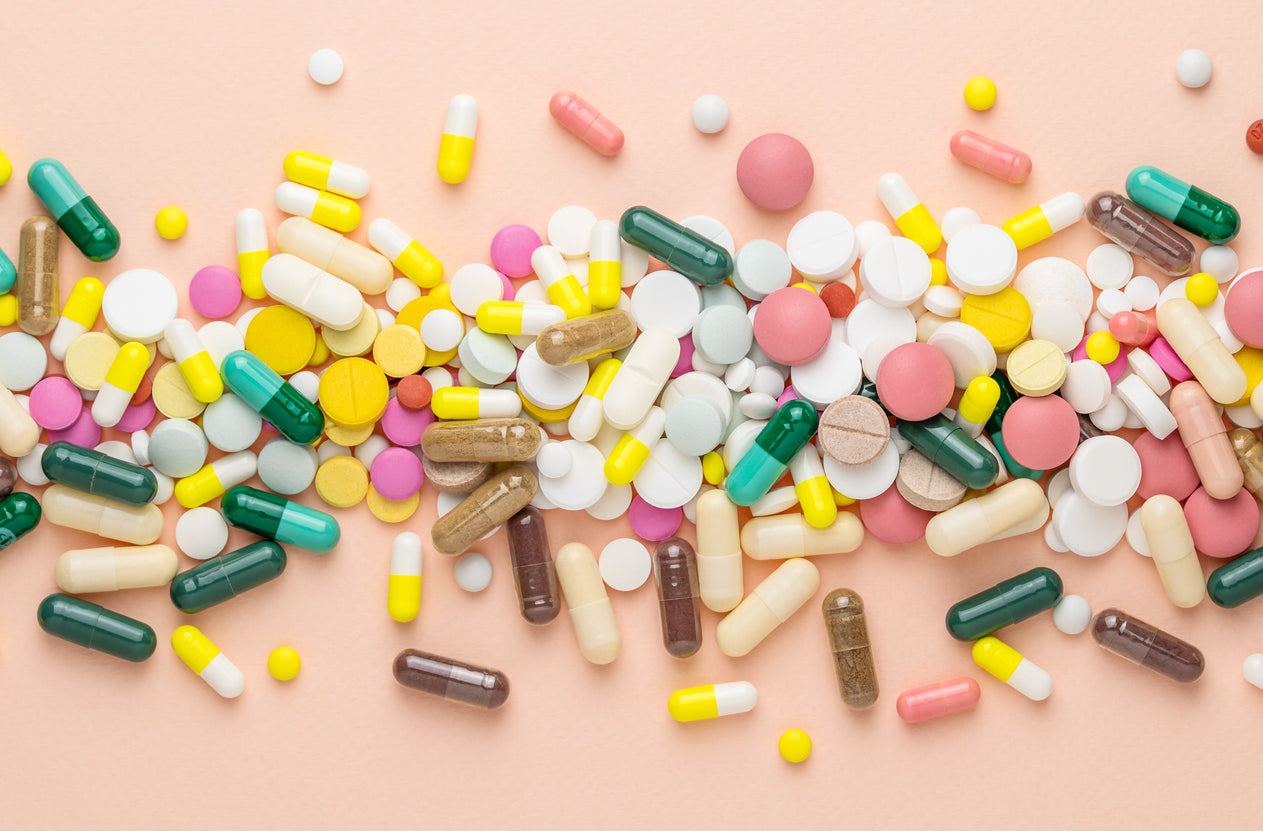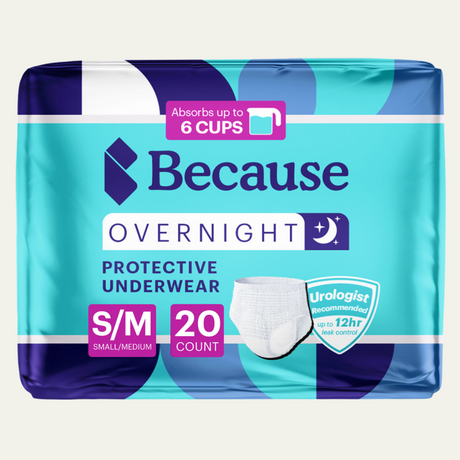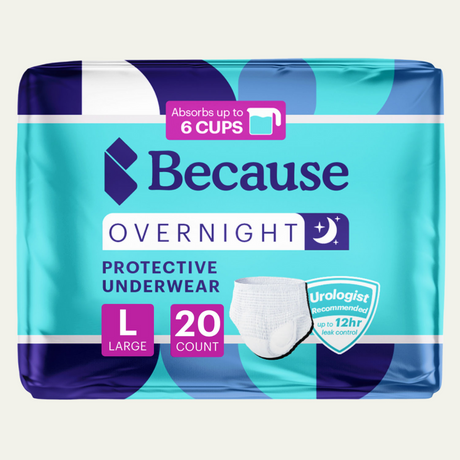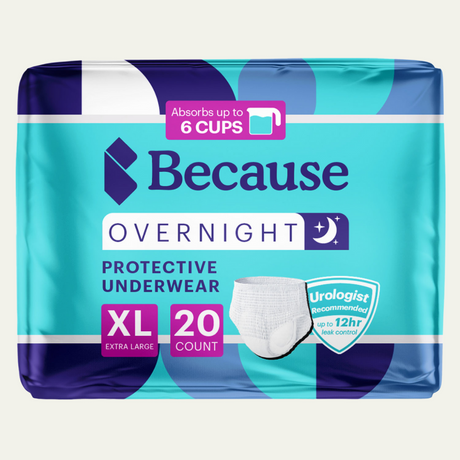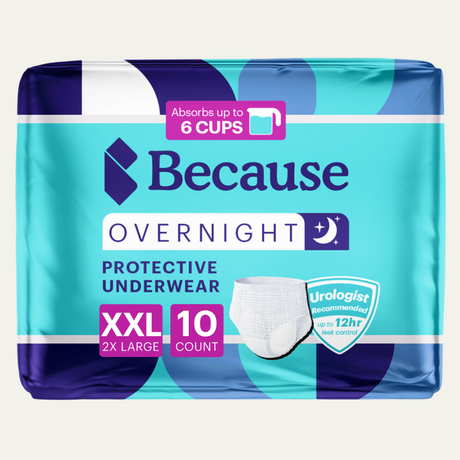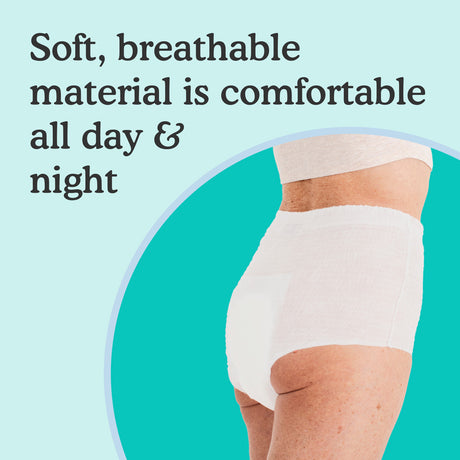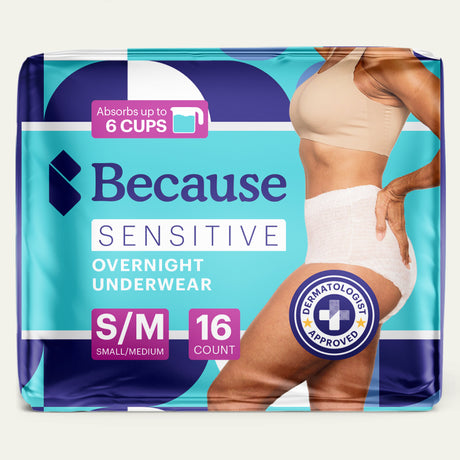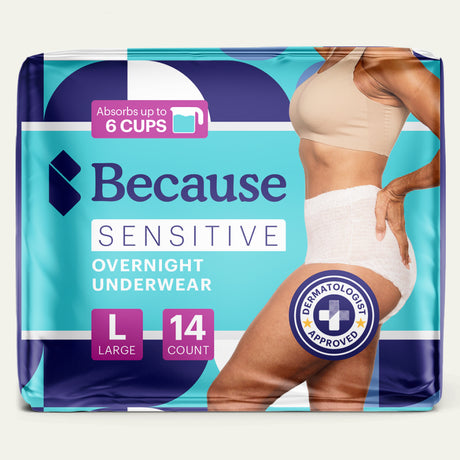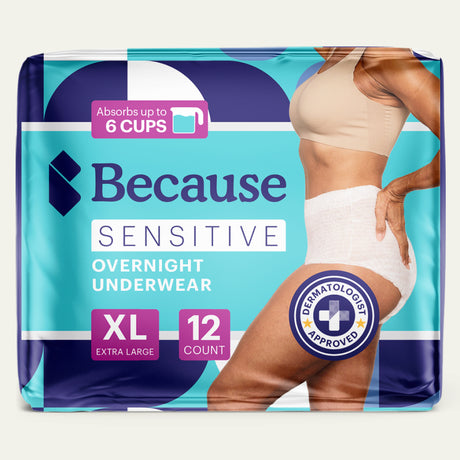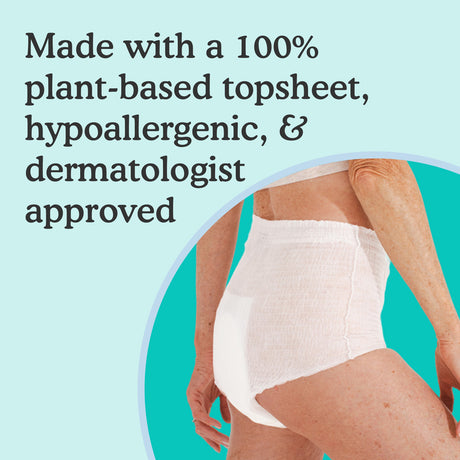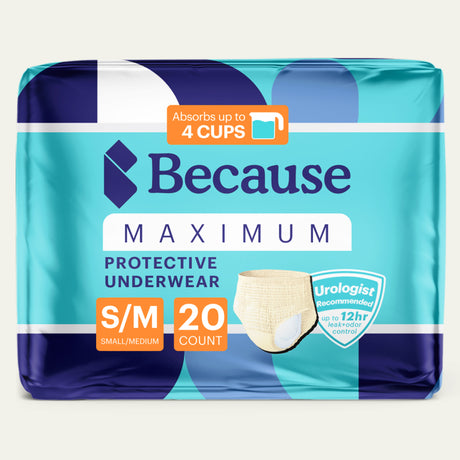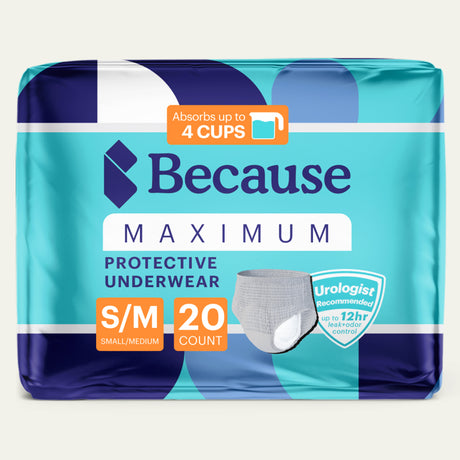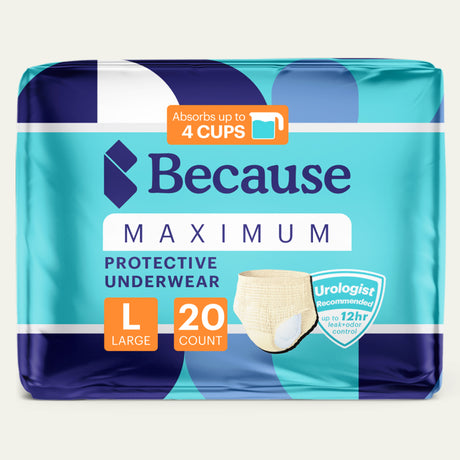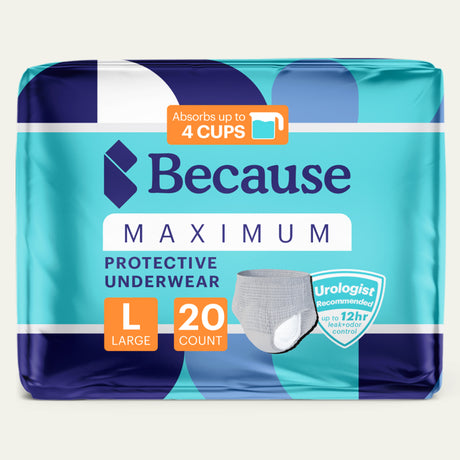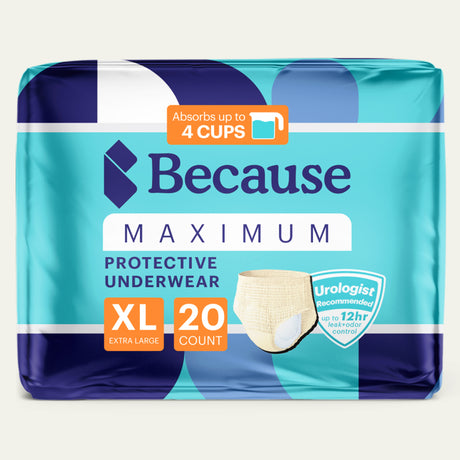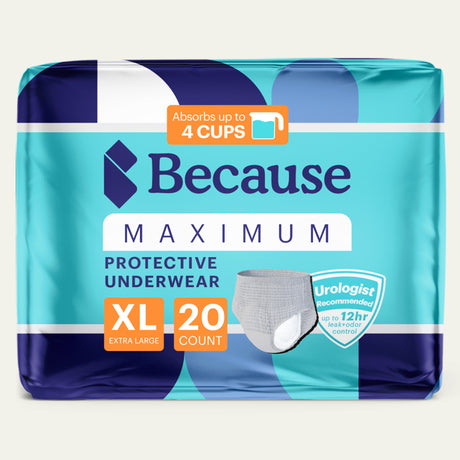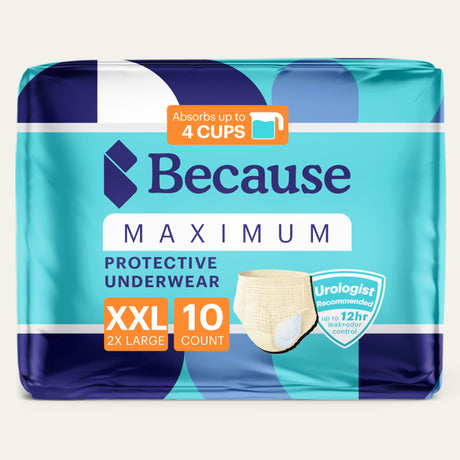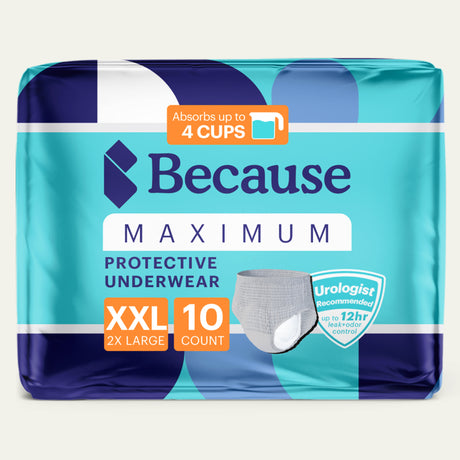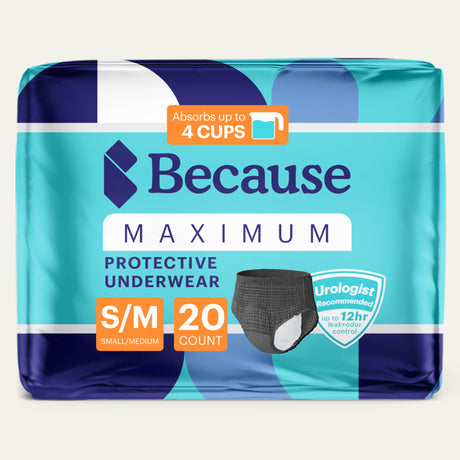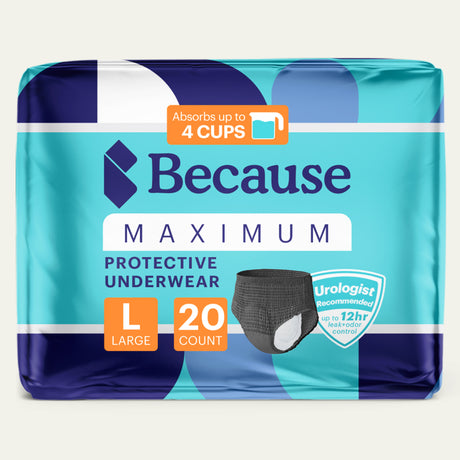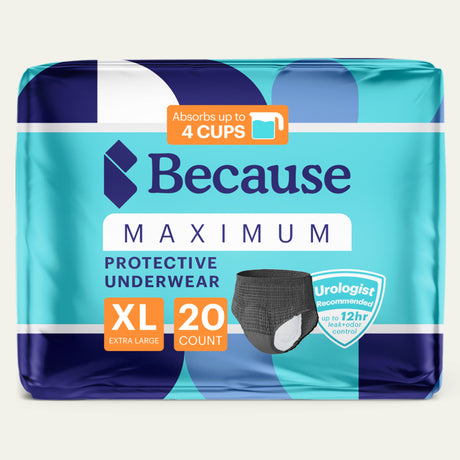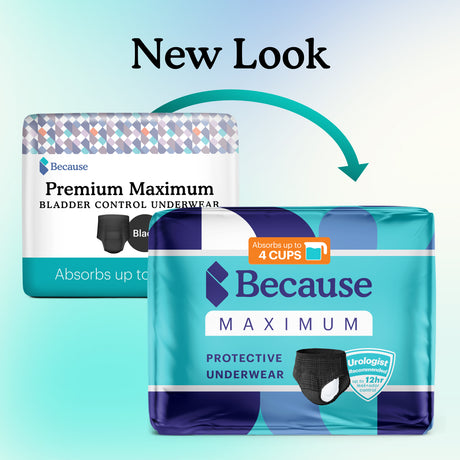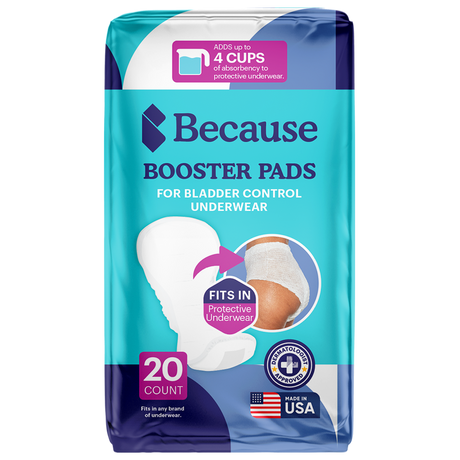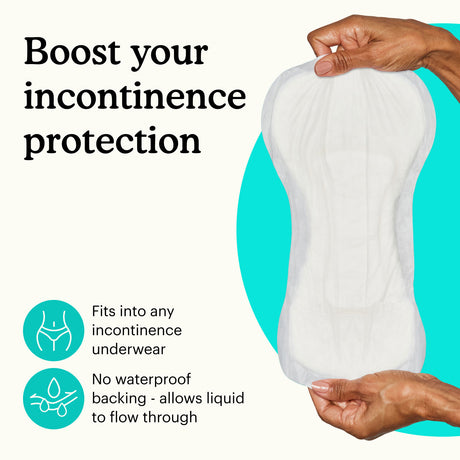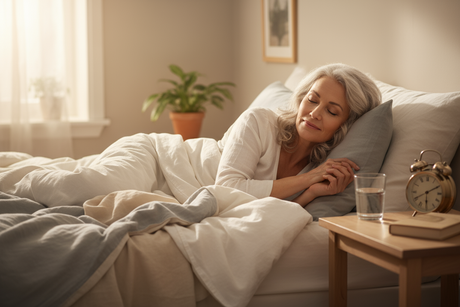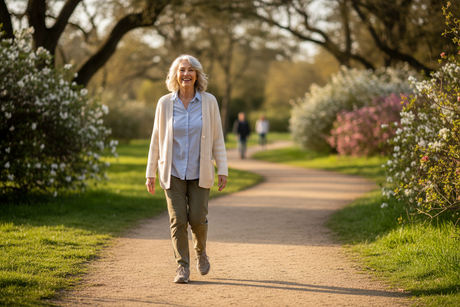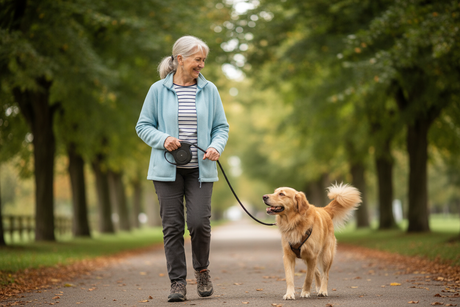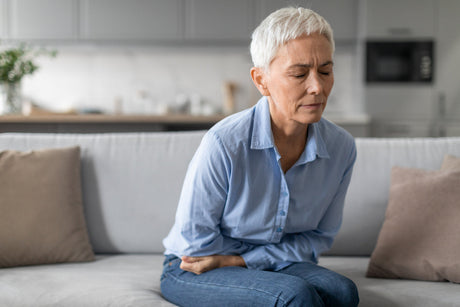Urinary incontinence (UI) happens when you accidentally leak urine, and while it can be frustrating, it’s also incredibly common. Millions of people experience it, and it’s nothing to be embarrassed about. Whether it’s a few drops when you laugh or a sudden urge that’s hard to control, UI can impact daily life—but the good news is that there are plenty of ways to manage it. From simple lifestyle tweaks to incontinence products to over-the-counter drugs for incontinence, you have choices to help you feel more confident and in control.
In this article, we’ll explore different types of over-the-counter (OTC) treatments, from antihistamines and anticholinergics to herbal remedies and bladder-friendly supplements. No matter where you are in your urinary incontinence journey, this guide will give you helpful insights and solutions to feel more comfortable and confident in your daily life.
Table of contents
What Is Urinary Incontinence and Why Does It Happen?
Ever had one of those moments where you laugh a little too hard or don’t make it to the bathroom in time? That’s urinary incontinence in a nutshell—it’s when bladder control isn’t as strong as it used to be, leading to occasional (or frequent) urine leaks. Urinary Incontinence can range from small, unexpected dribbles to a sudden, strong urge that’s tough to control.
There are a few different types of UI:
- Stress incontinence happens when pressure from coughing, sneezing, or exercise causes urine leaks.
- Urge incontinence feels like a sudden, strong need to urinate, sometimes with little warning. This condition is sometimes related to an overactive bladder (OAB), but they are not one in the same. Learn more about urge incontinence symptoms and treatments .
- Overflow incontinence occurs when your bladder doesn’t empty completely, leading to a constant dribble of urine. Learn more about the causes and symptoms of overflow incontinence .
- Functional incontinence isn’t a bladder issue itself—it happens when physical or cognitive challenges make getting to the bathroom in time difficult.
- Mixed incontinence is when someone experiences symptoms of both stress incontinence and urge incontinence. This is particularly common in women.
No matter the type, urinary incontinence is common and manageable, and there are plenty of ways to improve bladder control.
Who Does Urinary Incontinence Affect? (Hint: More People Than You Think!)
If you’ve ever felt alone in dealing with UI, don’t worry—you’re in good company. It’s incredibly common, affecting millions of people. Studies show that about 51% of women and 14% of men experience some form of UI.
For women, bladder leaks become more frequent with age. But UI isn’t just an “older adult” problem. Pregnancy , childbirth, menopause, and even lifestyle habits can all play a role.
Learn more about female urinary incontinence , symptoms, and treatment options.
For men, urinary incontinence is less common but often linked to prostate health. An enlarged prostate or prostate surgery can lead to bladder control challenges.
Learn more about the types and causes of male urinary incontinence .
No matter your age or situation, there are real, effective ways to manage urine leaks—and this guide will walk you through some of the best options, from over-the-counter solutions to simple lifestyle changes.

Are There Over-the-Counter Medications for Bladder Control?
If you’re looking for relief from urinary incontinence, you might be wondering if there are any medications you can pick up at your local pharmacy without a prescription. While most bladder control medications require a doctor’s approval, there are a few over-the-counter (OTC) options that may help. These include certain antihistamines, an FDA-approved patch for overactive bladder (OAB), and a variety of herbal remedies and supplements. Let’s take a closer look at what’s available and how they work.
Antihistamines: Can Allergy Medicine Help with Bladder Leaks?
You might know antihistamines as the go-to for allergy relief, but some of them also have an effect on the bladder. Certain antihistamines, like diphenhydramine (found in Benadryl), can relax bladder muscles, which might sound helpful. However, they can also cause urinary retention, making it harder to fully empty the bladder. This can sometimes make incontinence worse instead of better.
Possible Side Effects
Before using antihistamines for bladder control, it’s important to know about the potential downsides. These medications can cause:
- Drowsiness (which is why some are used as sleep aids)
- Dizziness
- Dry mouth
- Difficulty urinating (especially in men with enlarged prostates)
Because of these side effects, antihistamines aren’t typically recommended as a first-line option for managing urinary incontinence. If you’re considering them, it’s always best to check with a healthcare provider.
Anticholinergics: The Most Common Treatment—But Mostly Prescription-Only
Many of the most effective medications for urinary incontinence fall into the anticholinergic category, including oxybutynin, fesoterodine, and tolterodine. These drugs work by blocking a chemical called acetylcholine, which is responsible for triggering bladder muscle contractions. By slowing down those contractions, anticholinergics help reduce that sudden, urgent need to go.
Do I Need a Prescription for Oxybutynin (Brand Name: Ditropan)
Most anticholinergic medications require a prescription, but there is one FDA-approved OTC treatment for overactive bladder (OAB):
- Oxytrol for Women – This is a skin patch that delivers oxybutynin, a common overactive bladder (OAB) medication, through the skin. It helps reduce urgency, frequency, and leaks.
The two main side effects that can occur with Oxytrol are dry mouth and itching, rash, or redness on the area of skin surrounding the patch. Less commonly, Oxytrol may cause you to be unable to fully empty the bladder or make it harder to urinate (urinary retention).
Important to note: Oxytrol is only approved for women. Men who experience bladder control issues will need to speak with their doctor about prescription options.

Herbal Remedies and Supplements: Natural Ways to Support Bladder Health
If you’re looking for a natural way to help address urinary incontinence, certain supplements and herbal remedies might help. While they don’t work the same way as prescription medications, they can strengthen bladder function, reduce irritation, and support urinary tract health over time. Here’s a closer look at some key ingredients and how they work—plus a few easy ways to add them to your routine!
Cranberry Extract: Not Just for Urinary Tract Infections
Cranberries have long been known for their role in urinary tract health. They contain compounds that may help prevent bacteria from sticking to the bladder wall, reducing the risk of infections that can worsen incontinence symptoms. While cranberry juice is an option, many people prefer cranberry supplements because they offer concentrated benefits without the added sugar.
Try it: Because UTI Defense Daily Supplement is formulated with cranberry extract and D-mannose, a naturally occurring sugar that further helps flush bacteria from the urethra and urinary tract. Taking this daily can help support urinary health and reduce the likelihood of infections that may contribute to bladder leaks.
Magnesium: Good for Urinary Control and Constipation and Pumpkin Seed Extract: Supporting Bladder Control
Magnesium is essential for muscle and nerve function, including those involved in bladder control. Some studies suggest it can help reduce bladder spasms and calm an overactive bladder (OAB). Magnesium supplements can often cause softening of stool which is why some physicians may prescribe it as an OTC treatment for constipation. If you struggle from fecal incontinence in addition to overactive bladder (OAB) or urinary incontinence, magnesium might not be a good fit for you.
Pumpkin Seed Extract to Support Bladder Control
Pumpkin seed extract is another natural ingredient known for supporting bladder health, helping to improve muscle tone and reduce the urge to urinate.
Try it: Because Bladder Control Daily Supplement combines pumpkin seed extract and soybean germ to help promote better control and fewer leaks. This supplement is an easy way to gain control over you overactive bladder (OAB) and give your bladder the extra support it needs.
Probiotics: A Healthy Gut for a Healthy Bladder
Did you know that gut health is closely linked to bladder health? A well-balanced microbiome supports the immune system, which in turn helps maintain urinary tract health. Probiotics can help restore balance by promoting good bacteria that may reduce inflammation and support a healthy bladder.
Try it: Because Probiotic Support provides a blend of beneficial bacteria that can help maintain digestive and urinary health. If you experience frequent UTIs or bladder discomfort, adding a probiotic to your routine could make a noticeable difference.
By incorporating these supplements into your daily routine, you can take a proactive approach to bladder health. Whether you’re looking to prevent infections, calm an overactive bladder (OAB), or strengthen bladder muscles, these natural ingredients offer gentle, effective support. Always check with a healthcare provider before starting a new supplement to make sure it’s the right fit for you!
What About Prescription Medications Like Solifenacin, Mirabegron, and Trospium?
If over-the-counter options and supplements aren’t doing the trick, your doctor might recommend a prescription medication. These are often used to treat more moderate to severe symptoms of urinary incontinence, and they work in different ways to help reduce leaks, urgency, and frequency.
Solifenacin (Brand Name: Vesicare)
Solifenacin is part of the anticholinergic drug family, like oxybutynin. It works by relaxing the muscles in the bladder wall, helping to reduce sudden urges and frequent trips to the bathroom. Solifenacin is taken as a daily tablet and is generally well-tolerated, though it can cause side effects like dry mouth, constipation, and blurred vision.
Solifenacin may take a few weeks to show full benefits, so patience is key when starting this medication. It’s usually prescribed when other treatments haven’t worked or when symptoms are more disruptive.
Mirabegron (Brand Name: Myrbetriq)
Mirabegron is a beta-3 adrenergic agonist, which is a fancy way of saying it helps relax the bladder muscle and increase its capacity to hold urine. This makes it easier to delay the need to go. Mirabegron is taken once a day and can be a great alternative if anticholinergics cause too many side effects.
Mirabegron tends to have fewer side effects like dry mouth, which makes it a good option for people who haven’t tolerated other medications well. Some people may experience increased blood pressure or headaches while on Mirabegron, so regular check-ins with your provider are a good idea.
One serious side effect to watch out for is an increased risk of urinary tract infections.
Fesoterodine (Brand Name: Toviaz)
Fesoterodine is an antimuscarinic agent. Other antimuscarinic medications include oxybutynin (brand name: ditropan) and darifenacin (brand name: Enablex). This medicine works by relaxing bladder muscles to prevent symptoms of overactive bladder (OAB), frequent urination, or uncontrolled urination. The most common side effects associated with fesoterodine are dry mouth, constipation, difficulty emptying the bladder or urinating, and dry through and eyes.
Trospium (Brand Name: Sanctura)
Trospium is another anticholinergic medication, but it doesn’t cross into the brain as easily as some others. This may help reduce the risk of cognitive side effects like memory issues, which can be especially important for older adults. Like the others, it works by calming overactive bladder muscles resulting in less urge to urinate and is typically taken once or twice a day.
Common side effects include dry mouth and constipation, but it’s generally well-tolerated. If you’ve had trouble with other anticholinergics, this one may be worth discussing with your doctor.

Small Changes, Big Impact: How Lifestyle Tweaks Can Help
While medications and supplements can play a role in managing urinary incontinence, small lifestyle changes can make a huge difference, too! Simple shifts in your diet, hydration habits, and daily movement can help ease symptoms and improve bladder control over time. These adjustments are great if you’re looking for a more natural approach or want to boost the effects of any medical treatments you’re using. Plus, they’re easy to try—no prescriptions required!
How Your Diet Affects Bladder Health
Believe it or not, what you eat and drink can have a big impact on your bladder. Some foods and beverages are known to irritate the bladder lining, making leaks, urgency, or frequent trips to the bathroom more likely. The good news? A few smart swaps in your diet could help keep things calm and under control.
Foods That May Be Making Things Worse
Some foods and drinks are common bladder irritants , so if you’re noticing more leaks or urgency, these might be worth cutting back on:
- Alcohol – It’s a diuretic, which means it increases urine production and can make you go more often.
- Carbonated drinks – The bubbles in sodas and sparkling water can irritate your bladder and make urgency worse.
- Caffeine – Found in coffee, tea, chocolate, and energy drinks, caffeine can overstimulate the bladder and lead to more leaks. Learn more about the link between caffeine and incontinence.
- Spicy foods – Love hot peppers and bold flavors? Unfortunately, they can irritate the bladder lining and urethra leading to discomfort.
- Citrus fruits and juices – Oranges, lemons, and grapefruits are highly acidic, which can sometimes lead to bladder irritation.
- Artificial sweeteners – Sugar substitutes like aspartame and saccharin may increase bladder sensitivity and urgency.
If you’re not sure whether a certain food is affecting you, try cutting it out for a week or two and see if your symptoms improve. Everyone’s body reacts differently, so finding your personal triggers can be a game-changer!
Pelvic Floor Strengthening
Strengthening the pelvic floor muscles can significantly improve bladder control by enhancing support to the bladder and urethra. These muscles play a key role in maintaining continence, and regular exercises—such as Kegels—help increase their endurance and responsiveness. By strengthening pelvic floor muscles, individuals can better suppress involuntary bladder contractions that cause urgency and leakage. This training can also increase the time between feeling the urge to urinate and actually needing to go. Over time, consistent pelvic floor strengthening may lead to reduced episodes of urinary incontinence and greater confidence in daily activities.
Medical Treatment Options
If OTC or prescription medications for overactive bladder and incontinence aren't working well enough for your lifestyle, there are medical treatment options available. There are out patient treatments such as Bulkamid injections, Botox injections, sacral nerve stimulation (SNS), or percutaneous nerve stimulation (PTNS). There are also surgical options available like bladder sling procedures, procedures to reduce enlarged prostates, and colposuspension (lifting the bladder neck).
Bladder Support Products: Extra Protection While You Find What Works
Today’s absorbent underwear and pads are designed to be discreet, comfortable, and effective. Because brand products are thinner, breathable, and made with moisture-wicking materials to keep you feeling dry. Ranging from Overnight Incontinence Underwear, which can absorb up to 6 cups of urine, to Moderate Absorbency Pads, capable of absorbing 1 cup of urine, Because has a bladder protection product for every level of leak.
Skincare & Odor Control
If you’re managing leaks regularly, gentle skincare products can help protect against irritation. Barrier creams, cleansing wipes, and pH-balanced washes can keep your skin healthy and comfortable. Because absorbent products, like our underwear and pads, also have built-in odor control. Consider an odor-neutralizing spray or disposable pads with extra protection to add an extra layer of confidence.
By combining internal treatments (medications, supplements, and lifestyle changes) with external support (absorbent and skin-friendly products), you can build a plan that works for you—helping you stay dry, comfortable, and confident in your daily life.
Finding What Works for You
Managing urinary incontinence isn’t a one-size-fits-all journey. Some people find relief with over-the-counter medications, while others benefit more from dietary changes, bladder training, or protective products. The key is to try different approaches, listen to your body, and find what helps you feel your best.
If you’re struggling with frequent urine leaks or nothing seems to be working, don’t hesitate to talk to a doctor. There are plenty of prescription treatments and medical procedures that can help, and a healthcare provider can guide you to the best options for your needs.
No matter where you are in your bladder health journey, you have options—and you don’t have to navigate this alone. With the right combination of treatments and support, you can feel more in control, more comfortable, and more confident every day.
Frequently Asked Questions:
Do over-the-counter medications for urinary incontinence and overactive bladder (OAB) actually work?
Yes, some over-the-counter supplements for urinary incontinence and overactive bladder (OAB) show promise, particularly those containing pumpkin seed extract and soygerm. One study found that pumpkin seed extract significantly reduced nocturia and improved bladder function in men and women with OAB.
What are the different types of prescription medications for urinary incontinence and overactive bladder (OAB)?
Anticholinergics: Block the action of acetylcholine on bladder muscles to reduce involuntary contractions, helping control urgency and frequency related to urge incontinence.
Beta-3 Adrenergic Agonists: Stimulate beta-3 receptors in the bladder, relaxing the detrusor muscle to increase bladder capacity and delay the urge to urinate.
Tricyclic Antidepressants: Primarily used for depression, they can also relax bladder muscles and increase bladder capacity by blocking acetylcholine and affecting norepinephrine levels.
Topical Estrogens: Applied locally in postmenopausal women, they can improve urethra and vaginal tissue tone, indirectly supporting continence.
Botulinum Toxin (Botox): Injected into the bladder muscle, it blocks nerve signals that trigger overactive bladder contractions, used for severe or treatment-resistant cases.
What are some at-home tools I can use to gain control over my urge incontinence and overactive bladder (OAB)?
At-home strategies for managing urge incontinence and overactive bladder (OAB) include behavioral and physical techniques that improve bladder control over time. Bladder training involves gradually increasing the time between bathroom visits to retrain the bladder to hold urine longer which helps to treat symptoms of overactive bladder (OAB). Pelvic floor exercises (like Kegel exercises) strengthen the muscles that support the bladder and urethra, helping prevent leaks during sudden urges. Double voiding, or urinating twice within a few minutes, ensures the bladder is fully emptied and can reduce urgency. These methods, when practiced consistently, can significantly reduce symptoms and improve quality of life.
Sources:
Mayo Clinic. (2023, March 24). Bladder control problems. Mayo Clinic. https://www.mayoclinic.org/diseases-conditions/urinary-incontinence/in-depth/bladder-control-problems/art-20044220
MedlinePlus. (2023, June 15). Oxybutynin. U.S. National Library of Medicine. https://medlineplus.gov/druginfo/meds/a604037.html
MedlinePlus. (2023, June 15). Solifenacin. U.S. National Library of Medicine. https://medlineplus.gov/druginfo/meds/a605019.html
National Center for Biotechnology Information. (2021, December 10). Overactive bladder. In StatPearls [Internet]. Treasure Island (FL): StatPearls Publishing. https://www.ncbi.nlm.nih.gov/books/NBK538513/
National Center for Biotechnology Information. (2021, December 10). Urinary incontinence. In StatPearls [Internet]. Treasure Island (FL): StatPearls Publishing. https://www.ncbi.nlm.nih.gov/books/NBK555893/
National Association for Continence. (2025, April 2). The overactive bladder diet. National Association for Continence. https://nafc.org/bhealth-blog/the-overactive-bladder-diet
Pahlavan, P. (2011). Bladder dysfunction and aging. PMC (PubMed Central). https://pmc.ncbi.nlm.nih.gov/articles/PMC3197263/
Sahai, A. (2020). Incontinence and aging: A comprehensive review. PMC (PubMed Central). https://pmc.ncbi.nlm.nih.gov/articles/PMC8299659/
Thakur, M. (2002). Urinary incontinence treatment and management. JAMA Internal Medicine. https://jamanetwork.com/journals/jamainternalmedicine/fullarticle/486453
